Butterfly Conservation Ireland’s reserve at Lullybeg in County Kildare is one of only two reserves in Ireland managed with the needs of butterflies as the main priority. The other example is located nearby in Lullymore West, managed by the Irish Peatland Conservation Council.
Both reserves contain mosaics of grassland, scrub, woodland, and open water. In addition, Lullybeg Reserve contains bare peat and marl soil, which is very beneficial for butterflies. Both areas support orchids, which are mentioned not because these are particularly important for butterflies but because orchids are generally indicative of ecological richness.
Grazing and scrub control is applied on the reserve to maintain open habitats. These are rich and varied on Lullybeg; applying level 3 of the Fossitt Classification Codes and Descriptions, the grasslands/heath that Lullybeg contains are wet grassland (some is calcareous and in places wet grassland grades into poor fen and flush), dry-humid acid grassland, marsh, and wet heath.
These habitat conditions provide a home for a high range of moths and butterflies as well as hundreds of other invertebrate species.
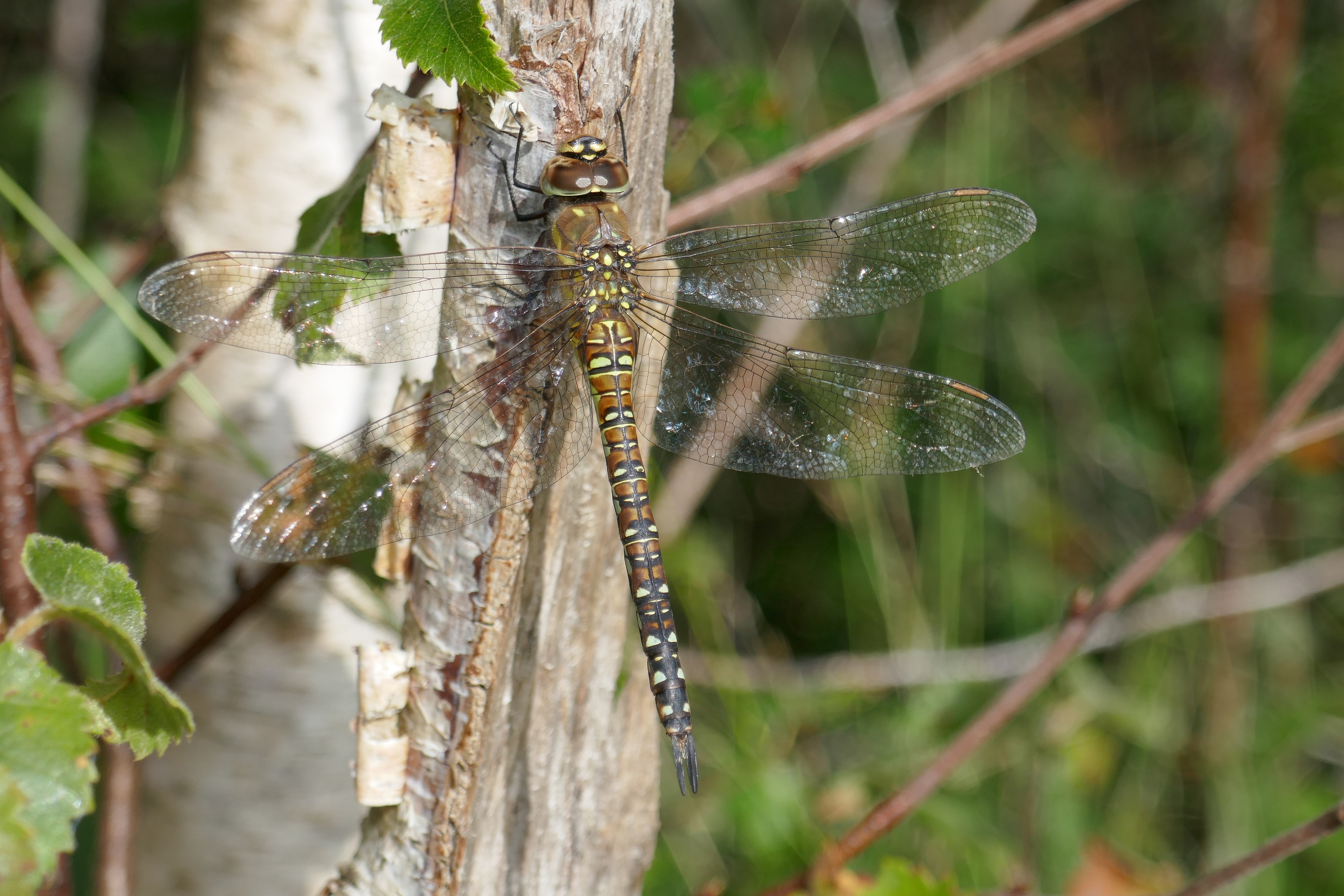
A bumper Marsh Fritillary population during the flight period in May and June is indicated by a transect count of 95 Marsh Fritillaries on the 27th of May with many other Marsh Fritillaries present elsewhere on the reserve outside the transect line (a transect is a fixed route where butterflies seen 2.5 metres on either side and 5 metres ahead are counted). A search on the 28th of August revealed 73 Marsh Fritillary larval nests, with a further nine nests on the ground directly adjoining the reserve located on the 1st of September. This figure of 82 larval nests represents the highest abundance yet recorded on the reserve and vicinity.
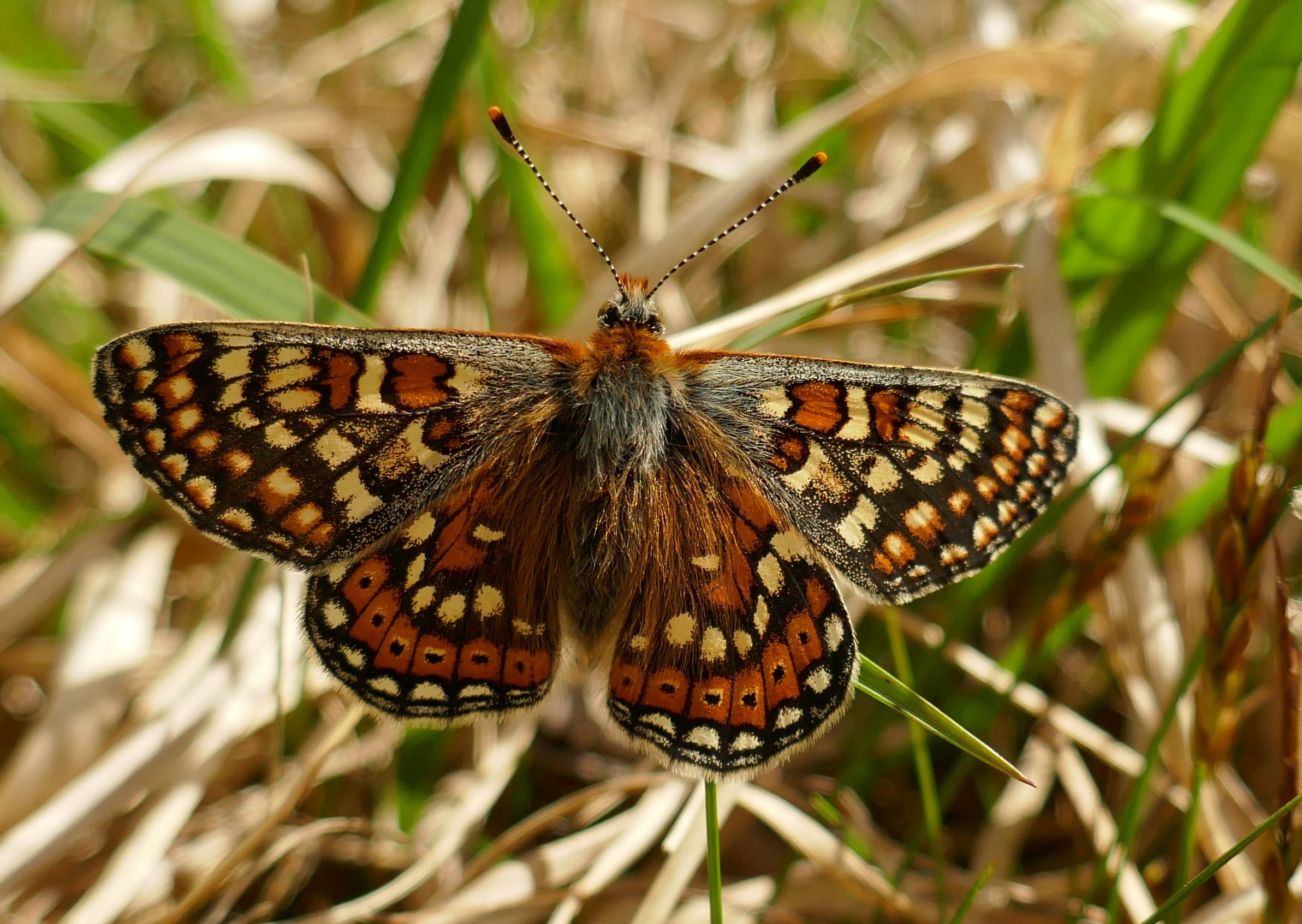
The positive conservation outcome does not end with the Marsh Fritillary butterfly’s upward trajectory, which has been building steadily from a low point in 2015.
The Marsh Fritillary breeds on a perennial flower called Devil’s-bit Scabious. The Marsh Fritillary caterpillars feed mainly on the basal leaves of the plant. The plant produces many nectar-rich flowers on branched stalks. These are in bloom mainly in August and September and into October. Because the plant which is abundant on the reserve produces a mass of flowers throughout late summer into mid-autumn, the reserve is very attractive to late-flying butterflies and moths.
One of the late flyers is the Comma butterfly. This species was not part of our butterfly fauna until the early 2000s, when it colonized the extreme southeast of Ireland, probably from southwest England. It was confirmed breeding in Ireland only in May 2014 and is spreading northward and westward. In 2019 the Comma was seen on the reserve when just one was seen. No Comma was seen there in 2020 and 2021, but several have been seen on the reserve this year, with 12 Commas seen on Devil’s-bit Scabious on the reserve on the 24th of September 2022, after five were observed on September 20th.
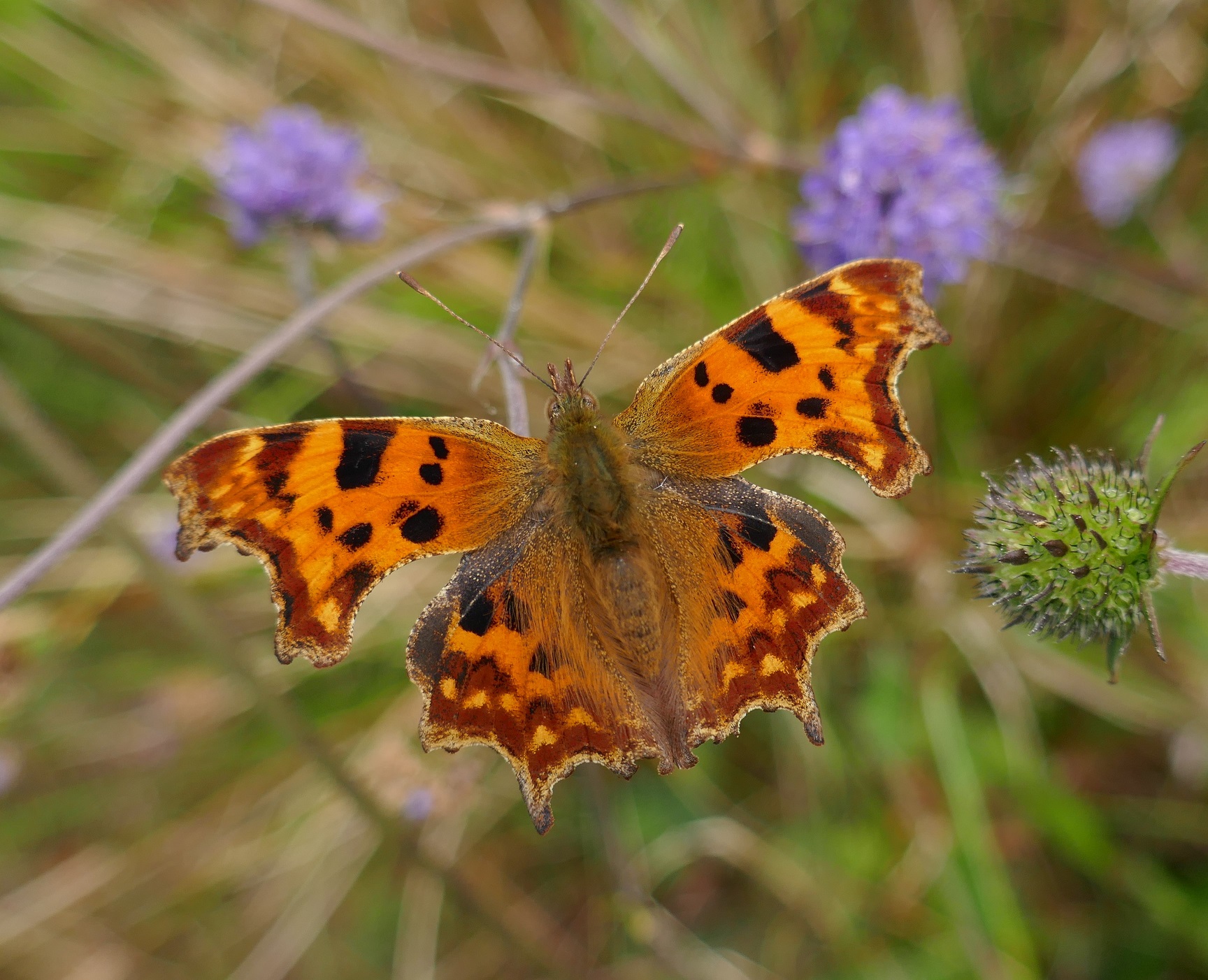
This abundance strongly suggests local breeding. It might be using nettles on the reserve or nearby, perhaps on nettles growing on the bank of the Crabtree River. Unlike its relatives, the Small Tortoiseshell and Peacock, the Comma is rarely found in abundance so finding 12 individuals on the site is noteworthy.
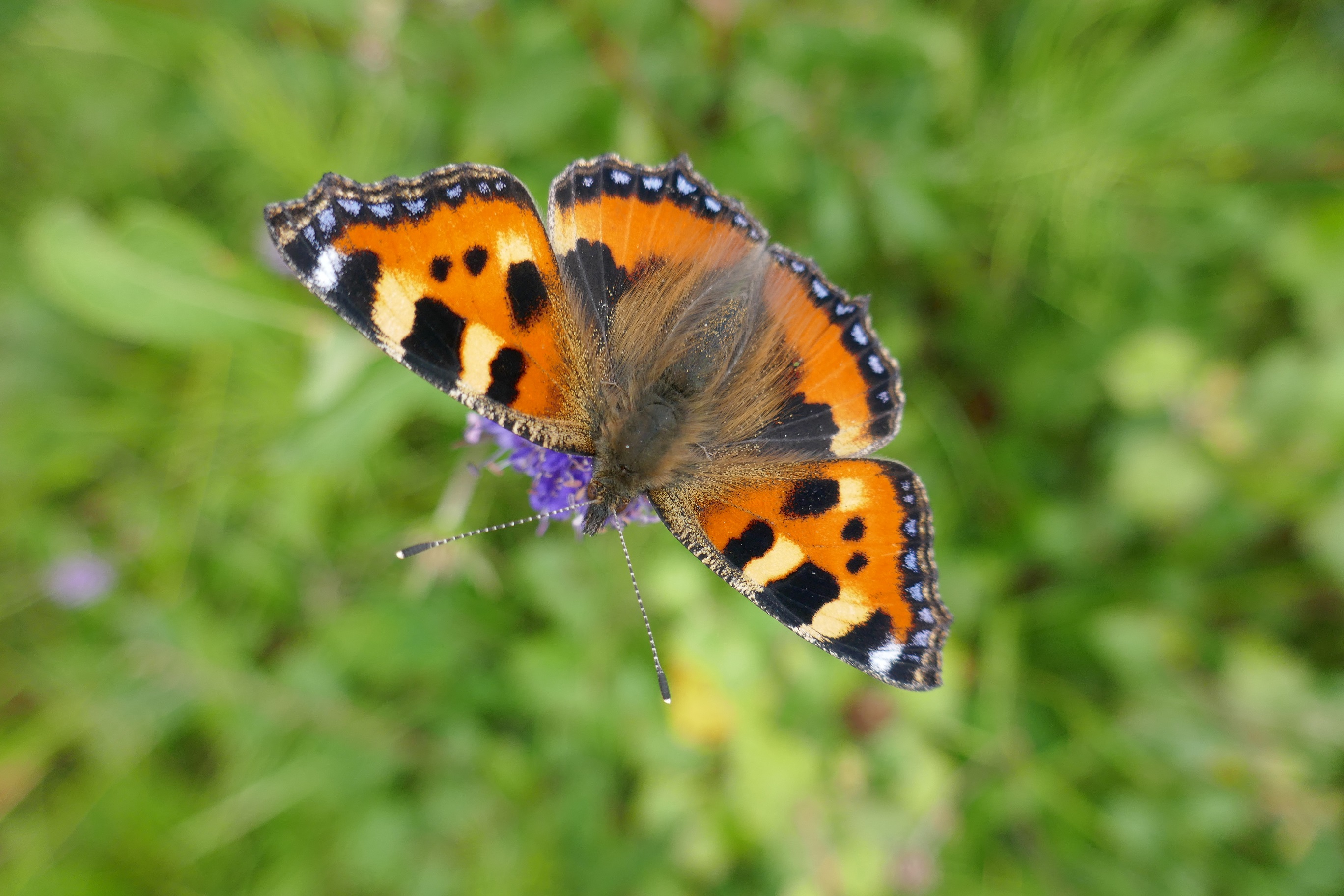
After feeding for a few days, the Commas will settle deep in wooded cover, wings closed, until spring. There is an abundance of such cover on the reserve, so it is expected that the butterfly will use the wooded habitat for over-wintering as well as feeding up for their long sleep on the open grasslands.
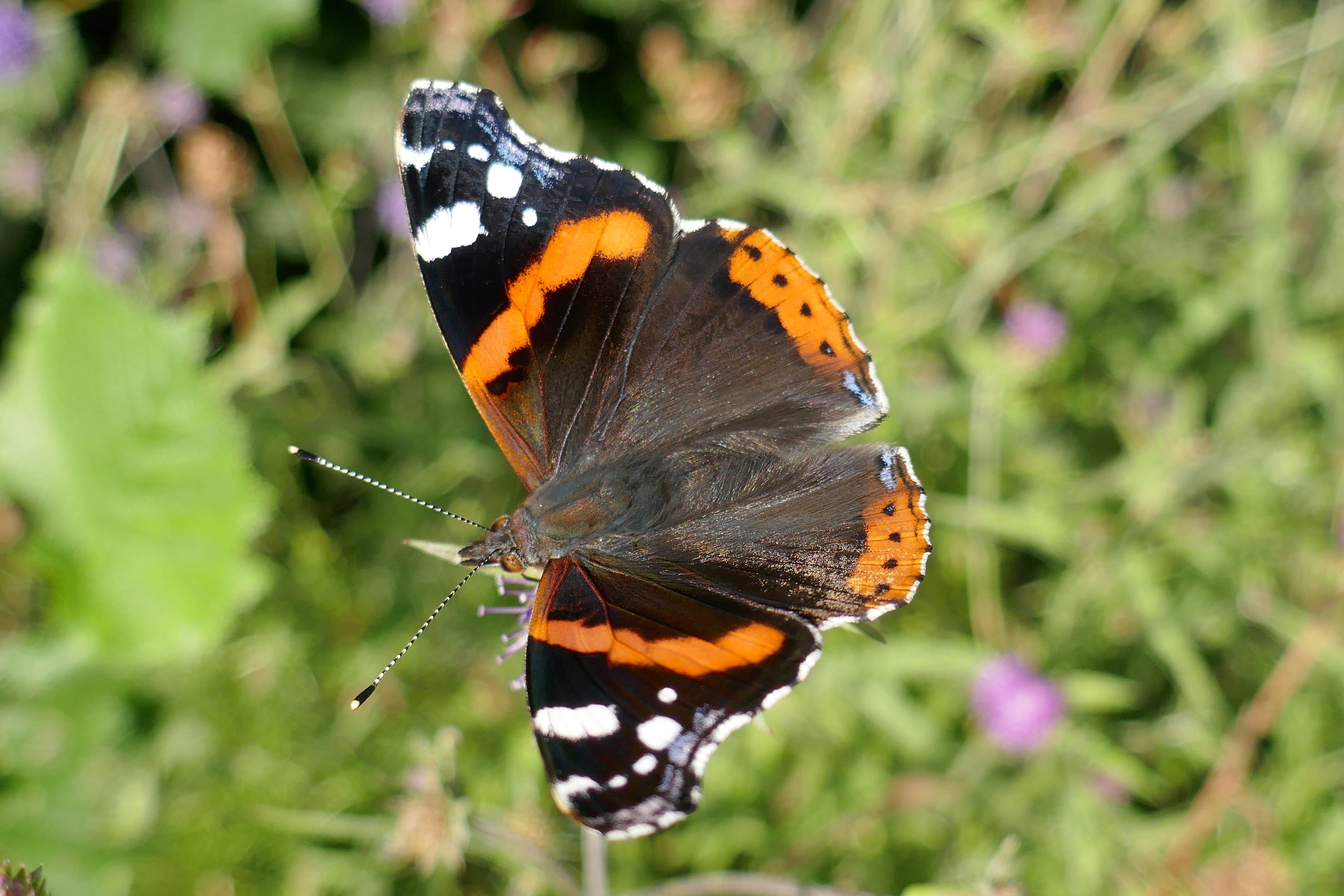
This autumn the Red Admiral has been present in good numbers too, feeding alongside the Comma. But the Red Admiral has a different strategy for dealing with the long, cold, nectarless months: migration. When the reserve’s Red Admirals are well stocked with nectar, they will fly south, making landfall in warmer parts of Europe where they will breed. Red Admiral migration certainly occurred between September 20th when 41 were counted and September 24th when just six remained.
I saw what must have been a migration flight by a Red Admiral on the 24th of September 2022. It flew up from Devil’s-bit Scabious, directly over my head, and flew strongly upwards in a southerly direction until it vanished from sight. It began its upward flight at a c. 45-degree angle, ascending afterward at about 60 degrees, and before disappearing from view its angle of ascent increased. The wind was northerly, about force 2-3 on the Beaufort Scale, ideal for a southbound butterfly.
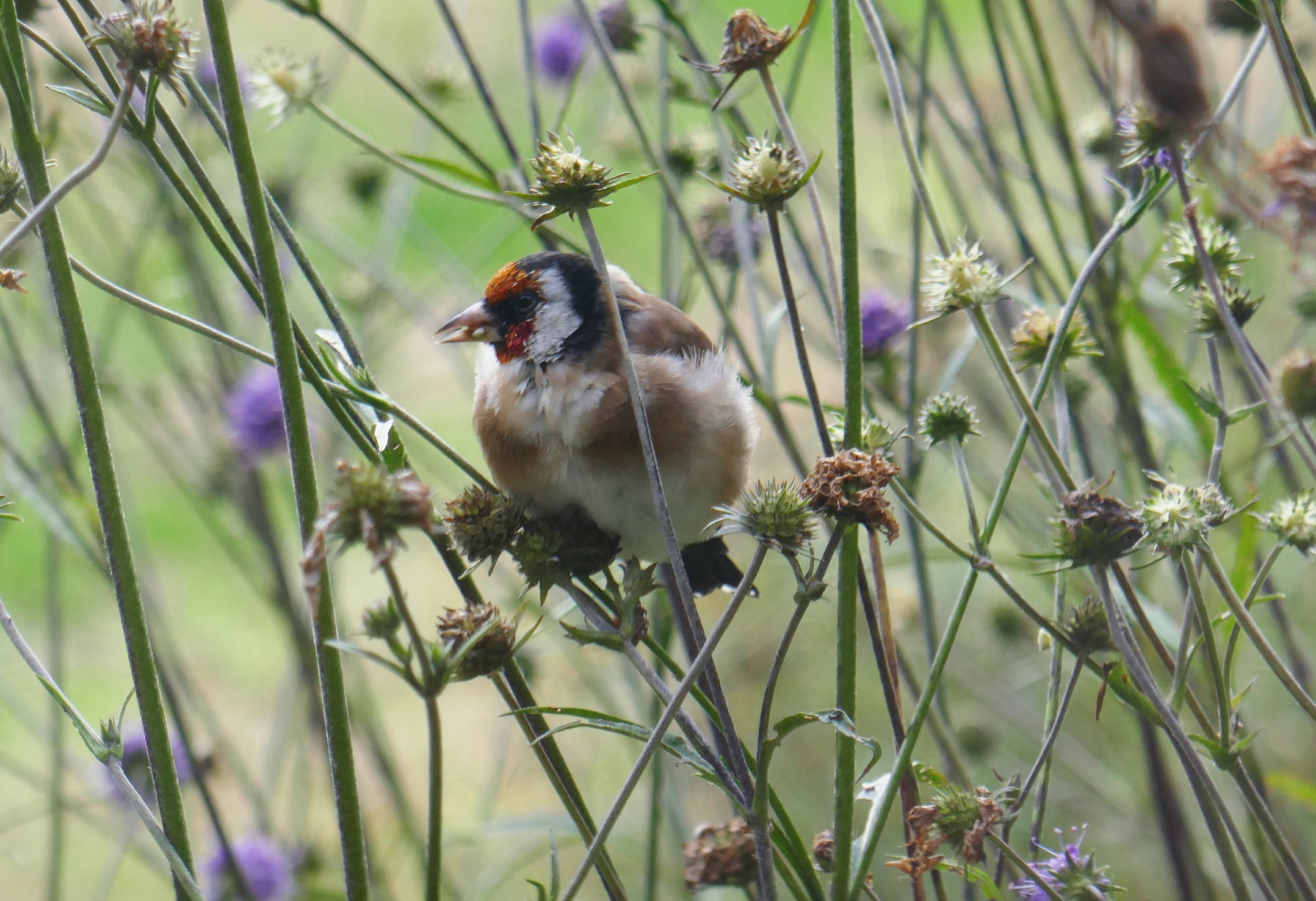
These are just some of the highlights from the reserve. You can read a more comprehensive report on the reserve’s progress in our forthcoming Annual Report 2022.

